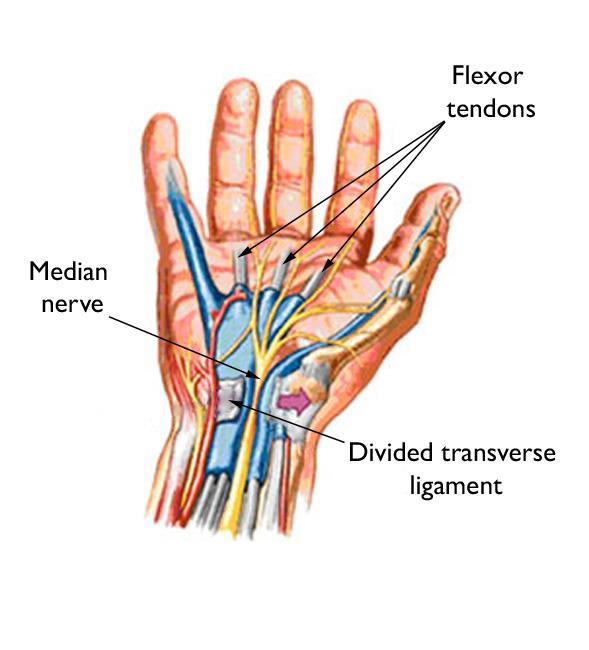Carpal tunnel release surgery can help restore hand function, relieve discomfort, and improve your overall quality of life. This option may be recommended in situations of persistent symptoms despite trying non-surgical treatments such as splints, activity modifications, or corticosteroid injections. Read more on carpal tunnel syndrome below.
Indications for surgery
Carpal tunnel release surgery may be recommended in situations of:
- Severe nerve compression results in significant numbness, weakness, or muscle wasting in the hand
- Symptoms that hinder daily activities, work, or sleep
Some demographics are at higher risk of developing carpal tunnel syndrome; these can include:
- Women aged 40–60 years
- Pregnant individuals (due to hormonal changes and fluid retention)
- Those with arthritis or repetitive strain injuries
- Individuals with a naturally smaller carpal tunnel or a history of wrist fractures
Read the below guide from the NHS (UK) if you would like some evidence-based support in deciding about your treatment:
What the surgery involves
Carpal tunnel release surgery cuts the transverse carpal ligament, relieving pressure on the median nerve. This procedure is most commonly performed using an open technique:
- A small incision is made on the palm side of the wrist.
- The ligament is carefully cut to create more space for the median nerve.
- The area is inspected for any cysts or spurs that may have contributed and these are removed if found.
- The skin is closed with sutures and a dressing is applied.
The surgery is performed under local anaesthesia, using the WALANT (Wide Awake Local Anaesthesia with No Tourniquet) method, which allows you to remain awake during the procedure and provides a more rapid recovery.

What to expect after surgery
Post-surgery, most individuals experience relief from pain and tingling, although full recovery can take time. A small waterproof dressing will be applied, allowing you to shower, and you can start using your hand for light tasks immediately but may find gripping uncomfortable for up to six weeks.
Nerve symptoms will often improve gradually over weeks or months, and stitches are typically removed within two weeks (as the incision should fully heal by then). Pain and tingling usually improves before weakness and long standing cases may not have full resolution of symptoms.
Read the full post-operative rehabilitation protocol below:
How long will you need to spend in hospital?
Carpal tunnel release surgery is performed as a day procedure, meaning you can go home the same day. However, you’ll need someone to accompany you and stay with you for the first 24 hours if a general anaesthesia is required, which is rare.
Usual recovery time
- Most patients can resume driving within 1–2 weeks, depending on comfort and hand mobility.
- Desk jobs may resume within a week, but physically demanding tasks could take 4–6 weeks or longer.
Potential risks
Although complications are rare, they can include:
- Permanent nerve injury
- Infection at the incision site
- Recurrence of symptoms
- Persistent pain or tenderness around the scar, known as pillar pain syndrome
Choosing to undergo carpal tunnel release surgery
Dr Lambers always recommends taking your time to weigh the benefits of surgery and considering all your options. This procedure can provide lasting relief for many, but ensuring it aligns with your needs and lifestyle is important. A discussion with Dr Lambers will help determine if surgery is the right step for you.

